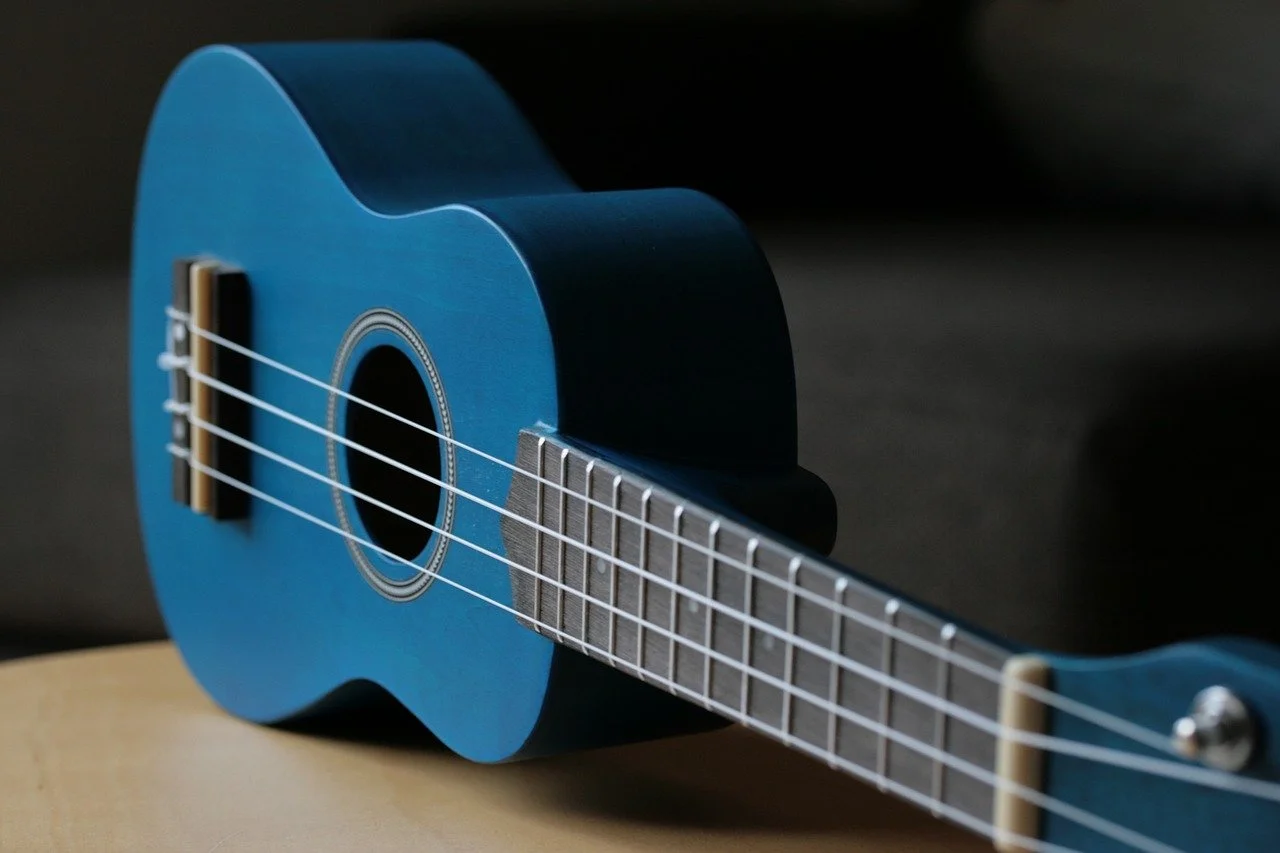Discover the Perfect Ukulele Strings for You
There are so many different types of ukulele strings out there and each has its own unique qualities. The type of strings that you use can make a huge difference to the sound of your ukulele. Let us guide you in the right direction to help you to decide how long your strings need to be and which type of ukulele strings are best for you!
What string length do I need?
Different lengths of strings work for different builds of uke, so it’s important to buy correctly sized strings, as soprano strings won’t fit a concert sized ukulele for example.
The length of string that you need will depend on the overall size of your ukulele and most importantly, the scale length of your ukulele.
The scale length is the length of the actual vibrating string – the distance from the nut to the bridge or saddle of your ukulele.
Ukulele Scale Length
A general guide to ukulele string lengths:
• Soprano ukulele strings are 21 inches long. Scale length 13 inches.
• Concert ukulele strings are 23 inches long. Scale length 15 inches.
• Tenor ukulele strings are 26 inches long. Scale length 17 inches.
• Baritone ukulele strings are 30 inches long. Scale length 19 inches.
What type of string is the best for my ukulele?
The sound of your ukulele does depend very much on the type of strings that you use. These are the five most common types of strings:
1. Nylon strings are the most common type and often come standard with most ukuleles. They offer a warm and mellow sound that is perfect for traditional Hawaiian tunes. If you're just starting out, nylon strings are an excellent choice as they are gentle on your fingertips and relatively affordable. However, keep in mind that they might require more frequent tuning, especially during the initial stretching period.
2. Fluorocarbon strings are very similar to nylon strings, but with a slightly brighter tone. This type of string may last longer than nylon strings and is also more likely to stay in tune for longer. They provide better intonation and tuning stability compared to nylon strings. Fluorocarbon strings also have a quicker break-in time, so you won't need to deal with the constant retuning hassle. Although they might be a bit pricier, the improved sound quality is often worth it for many players.
3. Steel strings are only used on hard body ukuleles that are built to handle the tension. Never use steel strings on a uke built for nylon as you could end up destroying it!
4. Wound nylon strings are somewhere in between nylon and steel. These strings have a nylon or fluorocarbon core that is wrapped around with a thin wire. Because these are heavier strings, they vibrate more slowly, causing a lower pitch and this type of string is more suited to baritone or tenor ukuleles. These strings produce a rich and warm tone, perfect for jazz, blues, and fingerstyle playing. They also offer excellent sustain and resonance, giving your ukulele a fuller sound.
5. Titanium Strings are a newer addition to the ukulele string family. They are known for their impressive durability and resistance to corrosion. Titanium strings strike a balance between the warmth of nylon and the brightness of fluorocarbon, making them a versatile choice for various playing styles. While they might come with a higher price tag, their longevity and consistent sound make them a favourite for many ukulele enthusiasts.
Two Top Tips
1. Many starter ukuleles come with basic strings and the tone and sound of them can be vastly improved straight away by fitting a new, good quality set of strings.
2. Buy two sets of strings if you can afford it, just in case one snaps with all the practising you are going to do!
In the end, the best ukulele string depends on your personal preferences, playing style and budget. Some players prefer the traditional sound of nylon, while others opt for the clarity of fluorocarbon or the richness of wound strings. Experiment with different types of strings to find the right sound for you and your uke.
Happy strumming 🙂
Find more expert tips and practice techniques with our useful guides.



